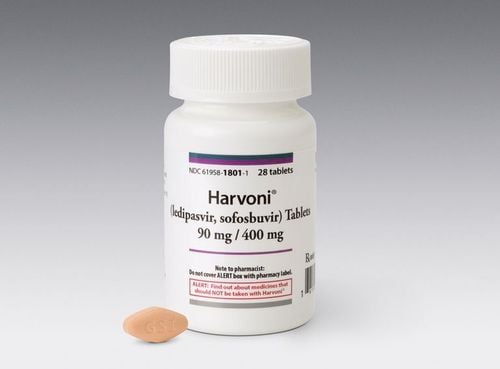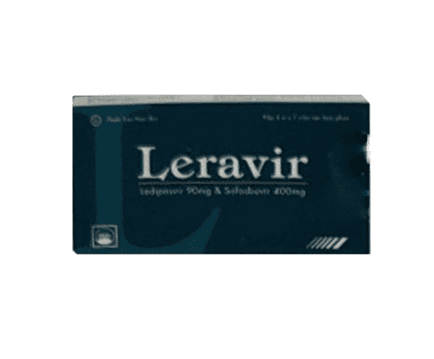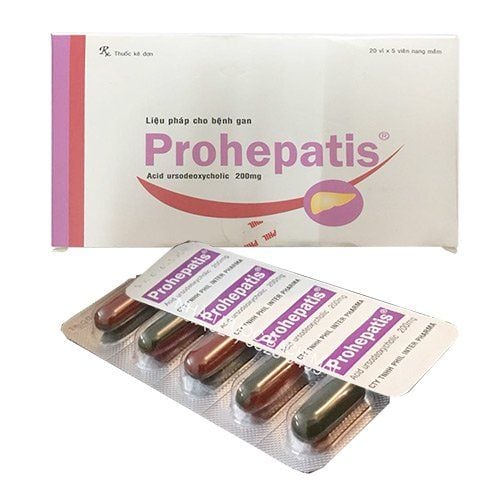This is an automatically translated article.
Asmenide 0.5 contains the active ingredient Entecavir which is indicated in the treatment of chronic hepatitis B. Let's learn about the uses and notes when using Asmenide 0.5 through the article below.1. Uses of Asmenide 0.5
What are the effects of Asmenide 0.5? ". Asmenide 0.5 contains the active ingredient Entecavir, which is available in the form of film-coated tablets. Asmenide is indicated in the following cases:Adults: Treatment of chronic hepatitis B in patients with liver failure as follows:
Compensated cirrhosis with evidence of hepatitis virus replication activity B, with persistent elevation of serum alanine aminotransferase and histologically symptomatic active inflammation or fibrosis; Decompensated cirrhosis. Treatment regimens in both cases were based on clinical trial data in nucleoside-nave patients with a positive HBeAg test or lamivudine-resistant patients.
Children: Asmenide 0.5 is indicated for the treatment of chronic HBV in nucleoside-nave children 2 years to under 18 years of age with compensated cirrhosis with evidence of hepatitis B virus replication activity. persistent elevation of serum ALT and histologically symptomatic active inflammation or fibrosis.
2. Dosage of Asmenide 0.5
The recommended dosage of Asmenide 0.5 is as follows:Adults with compensated cirrhosis:
For patients who have never used Nucleoside: Take 0.5mg/day orally with or without food; For patients resistant to Lamivudin: 1mg/day orally on an empty stomach (2 hours before or after meals). In case of LVDR mutations, consider the combination of Entecavir with a second antiviral drug (no cross-resistance with Entecavir or Lamivudin). Adults with decompensated cirrhosis:
The recommended dose is 1mg/time/day orally on an empty stomach; For HBeAg-positive patients: Duration of drug therapy is at least 12 months until seroconversion results or HBs seroconversion occurs or until drug efficacy is lost; For HBeAg-negative patients: Duration of drug therapy until HBs seroconversion or evidence of loss of efficacy. In the case of treatment lasting more than 2 years, the patient should be regularly evaluated to determine if continued treatment is effective. Children: Treatment regimens in children should be based on consideration of individual patient needs and reference to current pediatric guidelines such as baseline histological parameters,...
3. Undesirable effects of the drug Asmenide
Asmenide 0.5 can cause some unwanted effects as follows:Common: Headache, insomnia, dizziness, drowsiness, nausea, vomiting, diarrhea, indigestion, increased transaminases, fatigue; Uncommon: Alopecia, rash; Rare: Anaphylactic reactions, lactic acidosis (associated with decompensated cirrhosis).
4. Notes when using Asmenide
4.1. Contraindications
The use of Asmenide is contraindicated in patients with hypersensitivity to Entecavir or any component of Asmenide.4.2. Use caution
Severe hepatomegaly and lactic acidosis have been reported with Nucleoside analogues alone or in combination with antiretrovirals.
There have been reports of worsening of the disease in patients who discontinued anti-hepatitis B therapy, including with Entecavir.
During Asmenide treatment, patients should be closely monitored liver function.
Children: Clinical studies have shown that pediatric patients with baseline HBV DNA ≥ 8.0 log10 IU/ml have a lower virological response. Entecavir is therefore recommended only in these patients when the benefits outweigh the risks, some pediatric patients may require long-term, even lifelong, treatment for active chronic hepatitis B, and Entecavir should be considered for future options.
For pregnant women: The potential risks to the fetus have not been specifically studied. Therefore, caution should be exercised when using Asmenide in the treatment of pregnant women.
For lactating women: There are no specific studies demonstrating the ability of Entecavir to be excreted in human milk. However, animal data have shown that it is excreted in human milk. Therefore, it is recommended that breast-feeding be discontinued during Asmenide treatment.
5. Drug interactions
Caution should be exercised when Asmenide is co-administered with drugs that compete for renal tubular secretion or with drugs that impair renal function because Entecavir is eliminated primarily by the kidneys.Concomitant administration of Asmenide and Adefovir Disoproxil, Lamivudin or Tenofovir Disoproxil Fumarate did not cause serious pharmacokinetic interactions.
Asmenide does not induce or inhibit cytochrome P450 enzymes, so CYP450-mediated interactions do not occur with Asmenide.
Possible drug interactions that reduce the therapeutic effect of Asmenide, increase the risk of unwanted effects. Therefore, in order to ensure safety and effectiveness, patients need to inform their doctor about the drugs and functional foods they are using before being treated with Asmenide.
Please dial HOTLINE for more information or register for an appointment HERE. Download MyVinmec app to make appointments faster and to manage your bookings easily.













